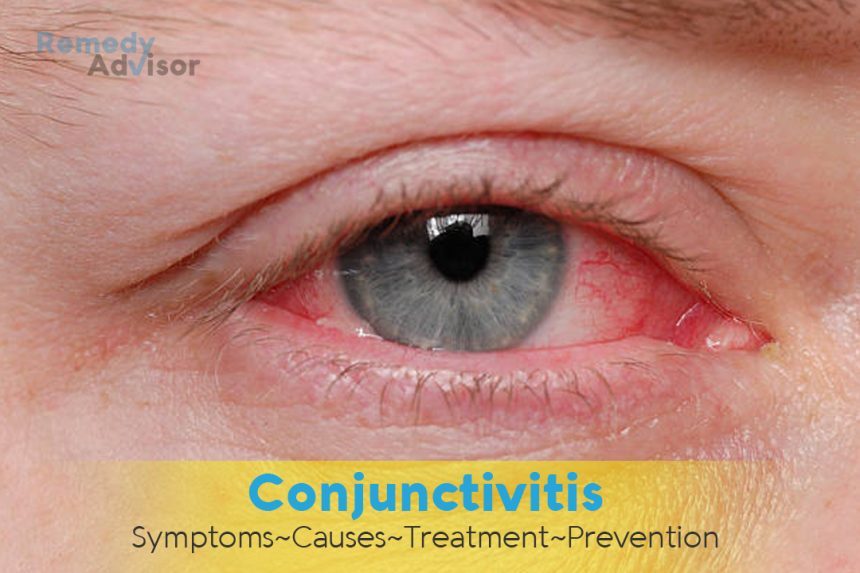What is it
Conjunctivitis, or pinkeye as it is popularly called (because of the dilation and reddening of the blood vessels in the whites of the eyes), is an infection or inflammation that affects the conjunctiva, the thin transparent lubricating membrane that lines the eyeballs and inner eyelids. It can be triggered either by an infection or an allergic reaction. The conjunctiva becomes red and inflamed, and this redness may be combined with a discharge from the eye. If the infection is bacterial, a yellow or white discharge typically occurs. If the whites of both eyes are red, and there is tearing but little or no discharge, this is more symptomatic of a viral infection. One or both eyes may be affected.
Symptoms
- Pink or reddish tinge to the white(s) of the eye(s).
- Oozing, pus-like discharge (bacterial conjunctivitis) or profuse tearing with slight discharge (viral conjunctivitis). Upon awakening, eyelids may be crusted over.
- Swollen eyelids.
- Sandy or gritty sensation upon blinking.
- Itching and tearing (allergic conjunctivitis).
What causes it
Conjunctivitis usually results from either a bacterial or viral infection, and either type of infection is highly contagious. Children who have conjunctivitis in one eye frequently spread it to the other eye with their fingers. The infection also can be easily passed from one person to another by direct contact (for example, shaking hands with an infected person and then touching your face) or by sharing towels or washcloths that have been used to wipe infected eyes. Improperly cleaned contact lenses, or lenses cleaned with expired solutions, can also be the cause of infections. Allergies to cosmetics or contact lens solutions, or exposure to pollen, chemical fumes, or other irritants, may also cause conjunctivitis. In these cases the condition is not contagious.
What if you do nothing
Viral conjunctivitis is usually not a serious eye ailment and typically clears up in a week, though symptoms can be bothersome for adults and children alike. Bacterial conjunctivitis is more serious than the viral form and may require treatment by a doctor. Allergic conjunctivitis can persist until the source of the reaction has been identified and dealt with. Some childhood diseases measles, German measles (rubella), and chicken pox can also cause conjunctivitis.
Home remedies
The following measures are usually effective for soothing conjunctivitis.
Apply a compress
For bacterial or viral conjunctivitis, dip a clean washcloth in warm water, wring it out, and place it over the eyes for five minutes. Once it cools, apply another warm one. Repeat two or three times throughout the day.
If the cause is allergic, applying cool compresses on the eyes can bring relief. Over-the counter antihistamines may also help reduce redness and itching.
Keep the infection from spreading
When the cause is viral or bacterial, wash and wipe away any discharge with tissue and avoid touching or rubbing the infected eye(s). If only one eye is infected, these steps will keep the infection from spreading to the other eye and also help prevent others from becoming infected. Also, don’t use contact lenses or eye makeup, which can spread the infection to the other eye.
Prevention
Practice good hygiene
Make it a habit to rinse your hands time to time with soap and water. This is mostly important if you are in contact with a child who has conjunctivitis.
Avoid rubbing or touching your eyes
It can easily spread an infection. Most of us touch our eyes without thinking, so not touching them needs a cautious effort.
Don’t share
Don’t share towels, washcloths, or eye makeup with others. If you have an infection, be sure to keep your washcloths and towels separate from those used by any people living with you and launder them separately as well.







